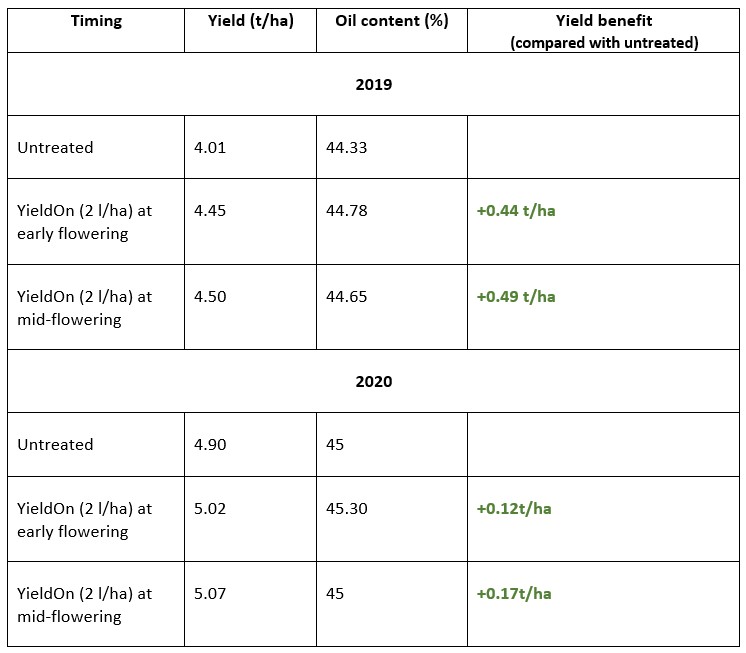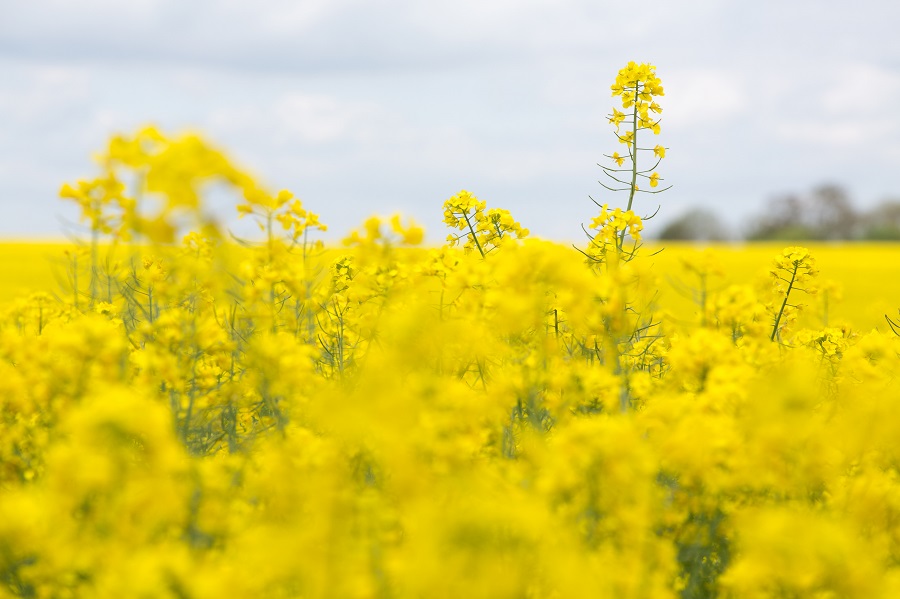In an era of high-input prices offsetting increased commodity values, squeezing every gram of yield potential is vital. Particularly for oilseed rape growers, the recent challenges and risk associated with the crop makes it even more crucial to ensure a profitable harvest.
While much of yield potential is dictated by the right conditions at the right time – and is therefore out of the hands of growers – there are actions that can be undertaken at field level, to increase productivity. This includes the use of biostimulants, and though the market for such products is arguably quite crowded, YieldOn, from Valagro, claims to work differently to the rest and effectively allows growers to ‘switch on’ yield potential, says Mike Garner, Valagro UK technical manager.
“YieldOn is a combination of three natural plant extracts including seaweed, with the addition of manganese, zinc and molybdenum, and has been developed using cutting-edge genomic technology,” explains Mike. “It works by stimulating cell number and size in the developing grains, as well as enhancing the movement of sugars and nutrients into the grain sites.”
Since its launch, YieldOn has repeatedly proven its claims in the field, but keen to demonstrate its potential year-after-year, further trial work was commissioned by Valagro in 2019, highlighting significant yield responses in OSR from a single application during flowering.
Trials were carried out by independent contractors, Cropsure, at two different sites and involved comparing two single applications at different timings during the flowering period, with untreated crops.
The results
In terms of yield, YieldOn applied at both timings (at a rate of 2 l/ha) provided a benefit when applied at early and mid-flowering, explains Mike – with the application at mid-flowering giving the edge over the earlier timing.
When applied at early flowering, YieldOn was responsible for a 0.44t/ha yield uplift in 2019, and 0.12t/ha in 2020. At mid-flowering, the treatment yielded a response of an additional 0.49t/ha and 0.17t/ha, respectively over the two years. Oil content also improved at early flowering, compared with the control crop.
Delving into the economics of this, Mike says these responses can stack up well financially. “Based on a standard price of £350/t, plus 1.5% of contract price for every 1% over 40% oil content, the two year averages of these results show growers could receive an additional £12.56/ha in oil bonuses when using YieldOn during early flowering, compared with untreated OSR.
“In terms of yield, the mid-flowering timing gave the best returns over the two years, and this additional yield is estimated at an increased crop value of £124.00/ha, over untreated crops.”
These results were also emulated in trial work carried out by Syngenta in Germany last year, adds Mike. “The work in Germany showed good yield responses from using YieldOn at a rate of 2 l/ha at flowering. In the top five highest yielding trials, YieldOn gave an average yield of 4.85t/ha compared with an average untreated yield of 4.36 t/ha – resulting in an average increase of 0.49t/ha.
“Out of a total of ten trials in the programme, YieldOn gave an average yield of 4.78t/ha compared with an average untreated yield of 4.5t/ha, equating to an average yield increase of 0.28t/ha.”
2019/2020 oilseed rape trials – the data

Note: Over the two years of UK trials, YieldOn gave a statistically significant response at the 5% level.
Source: Valagro




